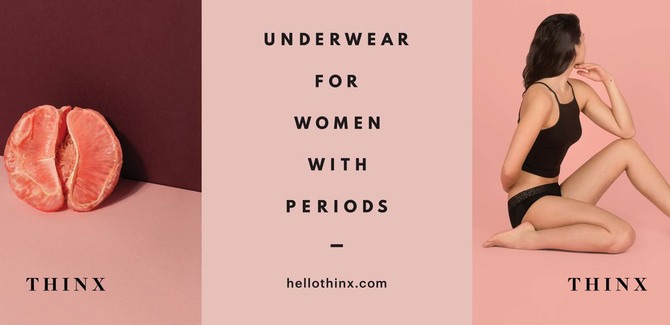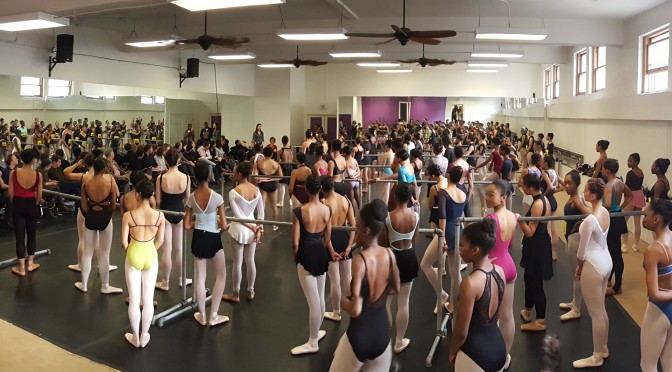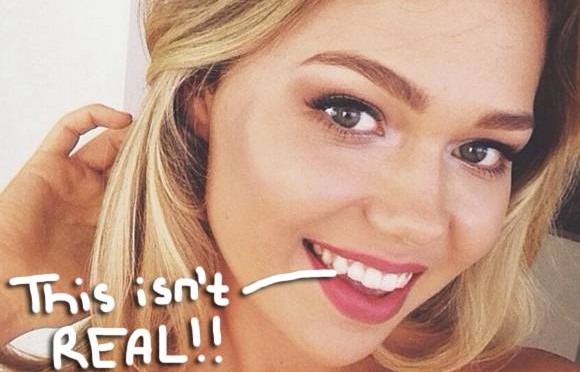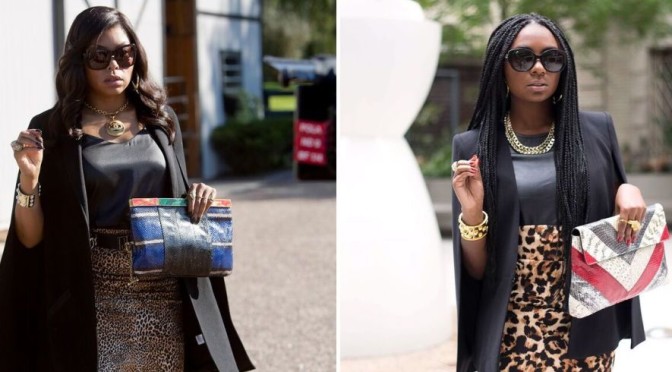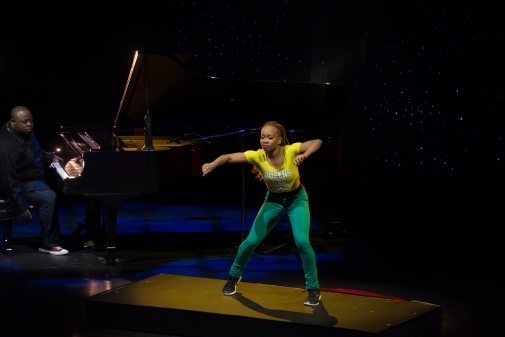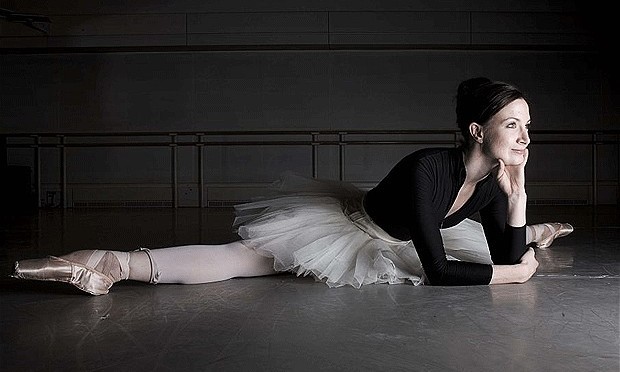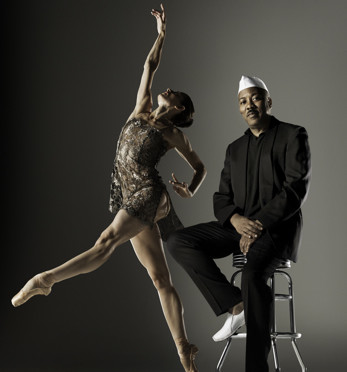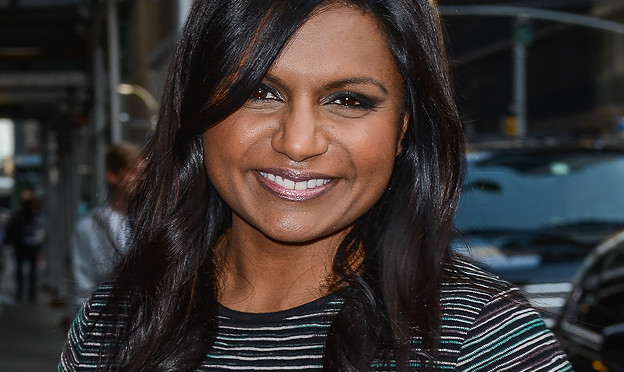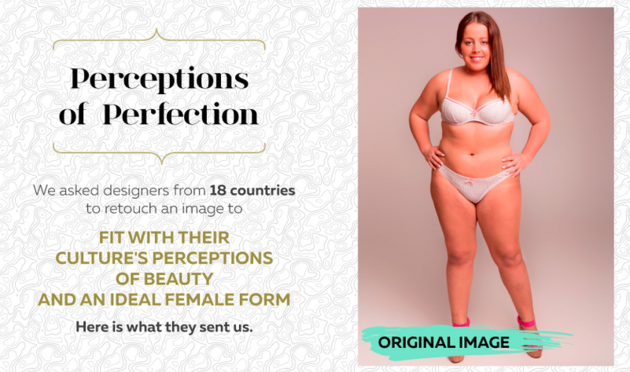
First Ever Audition for Black Female Ballet dancers is a Historical Coda to the International Association of Blacks in Dance 28th Dance Conference
January, 24th 2016
On a crystal clear morning in the Daniels and Fisher clock tower in downtown Denver Colorado, two worlds that have long orbited one another collided. The International Association of Blacks in Dance (IABD) extended an invitation to Artistic and Executive directors of major ballet companies to take part in a group audition for female ballet dancers of color to be held at their annual conference. 15 ballet organization were represented, they included: Peter Boal (Pacific Northwest Ballet), Ashely Wheater (Joffrey Ballet), Virginia Johnson (Dance Theatre of Harlem) Patrick Armand (San Francisco Ballet), Stanton Welch (Houston Ballet), and Dorothy Pugh (Memphis Ballet) [COMPLETE LIST BELOW] gathered not only for the audition, but to participate in a real conversation about why there remains a need for such an event in 2016.
A group ballet audition is the brainchild of the indefatigable Joan Myers Brown founder of both the Philadelphia Dance Company, and IABD. “I was told that they didn’t know where to find them, or how to find them [black dancers] so, we wanted to bring them here so that we could have the opportunity to show them black girls who could really do ballet.” The group audition was intended to create a space where artistic directors of companies and dance academies could collectively see dancers, a simple answer to a ubiquitous problem. The “group audition” has been a highly successful model for IABD for many years. “Dancers don’t have the money to run around auditioning for multiple companies and artistic directors don’t always have the time, this just made sense, we are all in the same place at the same time, why not have an audition? The main difference with our audition is that it is not only the directors that get to choose, but the dancers also gets to choose who they want to be with!” says Brown. She was determined to make this Ballet audition happen this year, for too long the octogenarian has witnessed what she refers to as “the lost opportunities” of countless Black ballet students.
Denise Saunders Thompson, IABD’s executive director brought Brown’s vision to fruition by gathering people and organizations to unite resources. She enrolled Executive Director of Dance/USA, Amy Fitterer, to help galvanize the Artistic Directors of ballet organizations and get them on board. She knew that if she could get a few large companies behind the idea, the rest would follow. During the follow-up debriefing for the Dance /USA Town Hall Race and Dance: Real Talk panel with Fitterer, Executive directors (San Francisco Ballet, Charlotte Ballet, New York City Ballet) and panelist Theresa Ruth Howard of the newly formed MoBBallet, Thompson floated the idea to see if they thought it would work, and all were on board. The caveat was that, IADB required participating organizations to come with something tangible to offer – “A contract to a first or second company, an apprenticeship, or training scholarship. You just can’t come into the room and observe. They [the Artistic Directors] answered the call, now let’s see what the commitment is going to be.You have to be ready to commit!” Thompson said emphatically.
There was a great deal riding on the success of this endeavor – if it went well it could be the start of a new approach to an old problem. Every scenario was taken into consideration: Who would the dancers be? Could dancers afford to make the trek? Would there be backlash if no offers were made? The planning team took these realities into consideration but would not let themselves not be stymied by them. The audition might not go perfectly but it would be action, a new approach, and we all would learn and grow from the experience. Due to generous donations The John Jones Memorial Fund, donated by Black Ballerina Ms. Delores Browne and the American Dance Institute (ADI) Future Artists Initiative, supporting diversity in Dance Education, IABD was able to sponsor a great number of the dancers.
Taking full advantage of having incredible amounts of power in one venue, IABD hosted a two hour “meet and greet” prior to the audition. This was an opportunity for everyone in that room to take a collective leap into the unknown with an authentic, honest talk about race and ballet. “The larger more vital aspect of this event is the fact this is the first time that the ballet world would enter the Black dance community and sit at a table to discuss us, with us. We have talked about diversity in our own spaces, but never have artistic directors, the “choice makers”, the people who actually are responsible for the aesthetic and for hiring, ever sat at a table with the Black dance community. Now we can build a relationship, a network, and a support system. I think it is really the only way that we are going to make some headway and enact change.” Says MoBBallet’s Theresa Ruth Howard.
What could have been an awkward or tense situation instead teemed with excitement and possibility. It was a room of people ready for change, looking for answers, guidance, and willing to band together to make it happen. “I know that this is a conversation that has been going on for decades, but there really does seem to be something different now… where maybe there really is an opportunity to make lasting change.”Dance USA’s Amy Fitterer remarked.
“We said to these artistic directors, it is more than a conversation, it is about action. This is a call to action. This is your opportunity to respond. And to really be apart of the real conversation of how you are going to diversify your organization, and… watching you do it.” Thompson explained.
The audition was held at IABD founding member, and the conference’s host, Cleo Parker Robinson Dance studios. The studio was packed – ballet representatives lined the mirrors, filling the barres were 87 hopeful dancers ranging in age from 15 to mid 20’s, representing every race and colors spanning the sepia spectrum. Robert Garland (of Dance Theater Harlem) prepared a variation, and the honorable Delores Brown, one of the America’s premier Black Ballerinas with the New York Negro Ballet (1957) began the barre. For the next three hours, the beauty, talent, and diversity of black female ballet dancers from around the globe was on display.
Quickly the fears about the level of the dancers were allayed, it proved to be like any other audition: strong, weak, and everything in-between. When the audition concluded, directors announced their picks, and dancers were welcome to approach whomever they were interested in for information and feedback. All representatives found candidates for summer intensive training and even company auditions (the final results are presently being tallied). The most important outcome was the enthusiastic desire and commitment to continuing the dialogue and building a network so that both communities can support one another going forward. As the room began to empty, the sight of Joan Myers Brown and Delores Brown standing together surveying what was taking place was monumental.
This is the only the start, there are plans to develop a caucus that would expand on these nascent efforts. Not even the snowstorm in the East could hinder this historical moment. It was a perfect coda to spectacular conference! After over 60 years Joan Myers Brown who long ago wanted to the the first Black ballerina was once again feeling the possibilities of the doors opening up was overwhelmed seeing manifestation of her most recent dream, “We did it, I am so grateful to you all, I really am” Myers Brown said with her hand to her heart, her eyes filled with emotion.
Adjudicators Present
Ballet Memphis
1. Dorothy Gunther Pugh, Founder & Artistic Director
2. Brian McSween, Ballet Master
Pennsylvania Ballet II
1. Francis Veyette, Director
Colorado Ballet
1. Gil Boggs, Artistic Director
Dance/USA
1. Amy Fitterer, Executive Director
Charlotte Ballet
1. Ayisha McMillan Cravotta, Academy Director
2. Jean-Pierre Bonnefoux, President & Artistic Director
Joffrey Ballet
1. Ashley Wheater, Artistic Director
Dance Theatre of Harlem
1. Virginia Johnson, Artistic Director
Houston Ballet
1. Stanton Welch, Artistic Director
Pacific Northwest Ballet
1. Peter Boal, Artistic Director
San Francisco Ballet
1. Patrick Armand, Artistic Director
2. Andrea (Andi) Yannone, Director of Education and Training
Kansas City Ballet
1. Devon Carney, Artistic Director
Washington Ballet
1. Erin Du, Co-Director of the Future Artist Initiative, American Dance Institute
(representative for Septime Webre)
Oregon Ballet Theatre
1. Kevin Irving, Artistic Director
School of Nashville Ballet
1. Hershel Horner, Full Time Faculty, Contemporary
Jacob’s Pillow
1. JR Glover, Director of Education
School of American Ballet (Observer only)
1. Leah Quintiliano, Diversity Program Manager


 Crazy right? Bustle.com did a great post about it:
Crazy right? Bustle.com did a great post about it:


